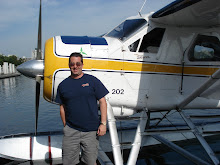Charles William Anderson Scott AFC 1903-1946


Charles W.A Scott was a famous English aviator.He was the son of Mary Donaldson and Charles Kennedy Scott who was founder of the Oriana Madrigal Society, conductor of the Philharmonic Choir.
Scott was educated at Westminster School. In 1920 he left school and took a 5 year contract with a sugar plantation at a British colony in Demerara, British Guiana. Scott did not enjoy his time at the sugar plantation and after 18 months and a bout of malaria his father arranged for his release of the 5 year contract and for his passage back home to London.He joined the RAF as a pilot in 1922 and on 9 December 1922 he was granted a short service commission as a probationary pilot Officer, and joined No. 2 Flying Training School, Duxford for flight training.He made his first "solo flight" in an Avro 504K and on 9 July 1923 his rank as Pilot Officer was confirmed,on 15 December 1923 he got his "wings" and was appointed Pilot Officer to be stationed with No. 32 Squadron RAF Kenley,where he acquired a reputation for his aerobatic skill flying Sopwith Snipes and Gloster Grebes. On 1 November 1924 he was appointed Flying Officer and was to be stationed at the Armament and Gunnery School Eastchurch,however the decision to post him there was changed and he remained with 32 Squadron, Kenley.He left the service on 9 December 1926 within which he had held both Heavy and Cruiserweight boxing titles.Having qualified for his 'B' commercial licence he emigrated to Australia to seek work with fledgling airline companies.[10] He played a pioneering role in the formation and the early expansion of the airline company Qantas which still operates to this day and is the national airline of Australia. As a commercial pilot in Australia he frequently made long air taxi flights, perhaps the best known being a 4,000-mile trip across Central Australia. During this time he acquired an intimate knowledge of the northern territory. In 1929 Qantas posted him to Brisbane to take over the duties of flying instructor at Eagle Farm Airport, Brisbane Flying Training School.Scott broke England-Australia flight records three times in 1931 and 1932,having drawn inspiration, he said from Bert Hinkler and Amy Johnson.It was announced in the London Gazette for June 30 1931 that "The King has been graciously pleased to approve of the award of the Air Force Cross to Mr. Charles William Anderson Scott in recognition of the distinguished services rendered to aviation by his recent flights between England and Australia.
C.W.A. Scott became a world-famous aviator when he and Tom Campbell Black won the London to Melbourne Centenary Air Race (MacRobertson Air Race) in 1934 flying one of three purpose-built de Havilland DH.88 Comets. In 1936, when he won the Rand Race with Guthrie in a Percival Vega Gull, flying from Portsmouth to Johannesburg in fifty-two hours and fifty-six minutes, the fever broke out afresh. King Edward VIII congratulated him and a few days later the Lord Mayor of London received him at the Mansion House. He could do no wrong. Journalists composed long eulogies, pointing out that he was not only a superb airman but a fine boxer who had held both the heavyweight and cruiserweight titles of the RAF. Also he was an excellent yachtsman, a member of the West Mersea club. Such sustained and feverish adulation would have been hard for anyone to take; and though Scott remained unaffected in the company of air-men, it was noticed that he had begun drinking rather heavily. Then, with the Munich crisis, the adulation stopped, and there were no more articles, no more contracts to be picked up from the Press.
During the war, Scott served for a time as an ARP ambulance driver; then he joined the RNVR as a lieutenant, and took part in the Dakar landing. He also spent a period as an Atlantic ferry pilot. But he found obscurity hard to accept; he realized that his world had gone for ever. In 1945 the race to Melbourne was as remote in most people's minds as Waterloo or the sinking of the Armada, six years of war having erected a great barrier of experience and feeling and loss. However he tried, Scott could not succeed in making a place for himself, could not find a job where his great experience and flair had any place. He was divorced, married a second wife, and was divorced again, and any stable relationship now seemed beyond him. Only alcohol brought any relief, and that was temporary. In 1946 he obtained a post with UNRRA, the United Nations agency, and went out to the headquarters in Germany. And it was here on 15 April that he shot himself. He was forty-two years old


<< Home